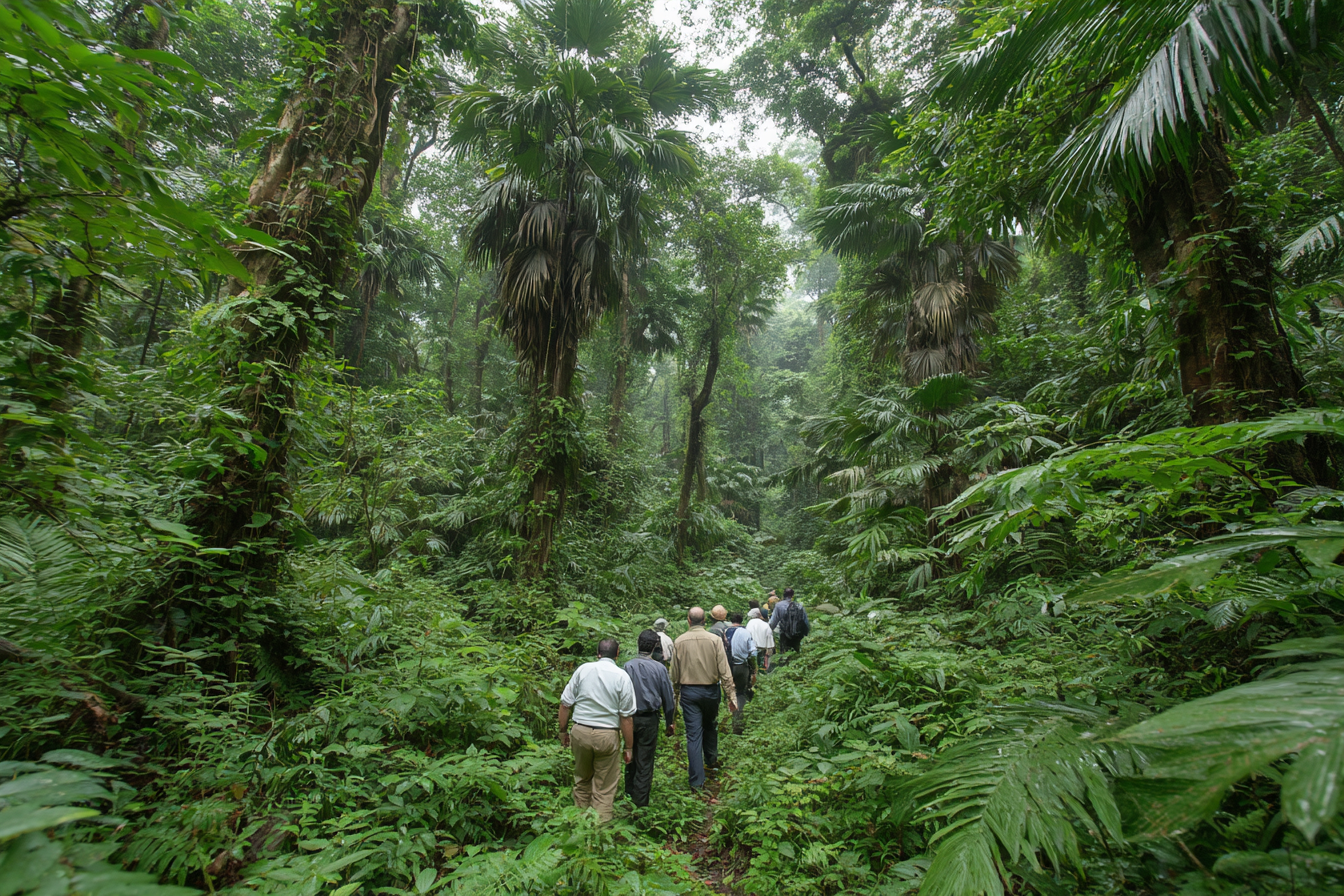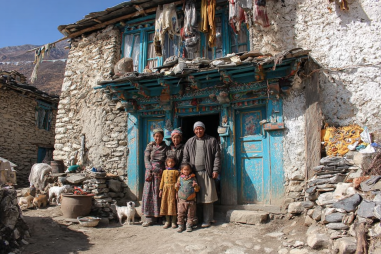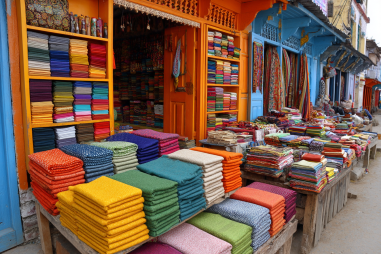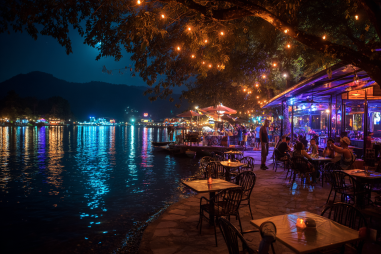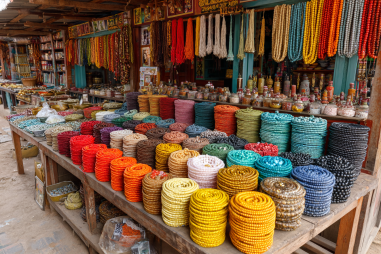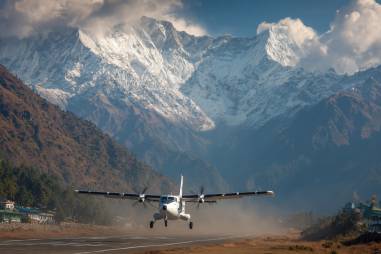Chitwan National Park, nestled in the heart of Nepal, offers a truly immersive experience for nature lovers and adventure seekers. While many visitors come to the park for jeep safaris and river rafting, jungle walks provide a unique opportunity to traverse the forest on foot and feel intimately connected to the rich biodiversity that thrives here. Guided jungle walks allow you to explore hidden trails, discover rare wildlife, and learn about the ecosystem from knowledgeable naturalists. If you’re curious about what a jungle walk in Chitwan entails, this guide will introduce you to the experience, including what to expect, how to stay safe, and when is the best time to venture into the wild on foot.
Importance of Jungle Walks in Chitwan
Jungle walks in Chitwan National Park offer an unparalleled way to experience the subtleties of its ecosystem. Unlike jeep safaris, which cover larger areas quickly, walking through the jungle invites a slower, more deliberate engagement with nature. These walks promote a deeper understanding of the environment, encouraging visitors to notice the smaller details – from bird songs to tiny insects and subtle tracks on the forest floor.
Moreover, walking tours support conservation by fostering respect for the park’s fragile ecosystems and endangered species. The close encounters offered on foot cultivate empathy for the wildlife and an appreciation of the intricate balance within the jungle. Guides also educate visitors about the importance of preserving natural habitats, making jungle walks both recreational and informative.
What to Expect on a Guided Walk
When you embark on a guided jungle walk in Chitwan, you’ll typically be accompanied by an experienced guide who knows the park well and prioritizes your safety. These walks can last anywhere from an hour to half a day, depending on your interests and fitness level.
Expect to move at a gentle pace, stopping frequently to observe flora and fauna. The guide will often point out signs of wildlife, such as animal footprints, scratch marks on tree bark, or broken branches where animals might have passed through. Many guides also carry binoculars to help spot birds and distant animals.
Trails may wind through dense forests, grasslands, or along the riverbanks where diverse habitats intersect. While the walking paths are generally safe and well-maintained, they can be uneven and muddy in places, so appropriate footwear is important.
Wildlife and Plant Life Spotting
Chitwan National Park is renowned for its astounding biodiversity. On a jungle walk, you may encounter a variety of wildlife such as:
- One-horned rhinoceros – often spotted grazing in grasslands
- Bengal tigers – elusive but sometimes spotted with experienced guides
- Wild elephants – they sometimes roam near trails
- Sloth bears – usually shy and nocturnal but evidence of their presence can be seen
- Various deer species including spotted deer and barking deer
- Monkeys such as the rhesus macaque and Hanuman langurs
- A rich assortment of birds including the endangered gharial crocodile near water bodies
Besides animals, the park’s plant life is equally fascinating. You’ll see giant sal trees towering above the canopy, ferns, grasses, orchids, and medicinal plants that have been used by local communities for centuries. The jungle’s sounds — chirping birds, rustling leaves, and occasional animal calls — complete this sensory experience.
Safety and Best Practices
Walking through a jungle requires some important safety precautions to ensure both your well-being and that of the wildlife. Here are some key tips to keep in mind:
- Always go with a licensed guide: Their knowledge of animal behavior and the terrain is essential for navigating safely.
- Wear appropriate clothing: Long sleeves, long pants, and sturdy walking shoes protect against insect bites, thorns, and uneven ground.
- Keep noise to a minimum: Loud sounds can disturb wildlife and provoke dangerous situations.
- Do not approach or feed animals: Maintain a respectful distance to avoid stressing the creatures or causing harm.
- Stay on designated trails: This helps preserve vegetation and reduces the risk of getting lost.
- Carry water and insect repellent: Hydration and protection against mosquitoes are important, especially in warmer months.
- Be mindful of the guide’s instructions: They may ask you to remain still when animals are near or to follow certain paths to avoid danger.
- Avoid strong scents: Perfumes or scented lotions might attract insects or animals.
Best Times to Undertake Jungle Walks
The timing of your jungle walk can significantly enhance your experience, as animal activity and vegetation vary with the seasons. The best months to visit Chitwan National Park for jungle walks are generally from October to March, during the dry and cooler season. During this period:
- The weather is comfortable for walking, with fewer mosquitoes and insects.
- Dense foliage has thinned somewhat, improving wildlife visibility.
- Animals are more likely to be spotted near waterholes in dry conditions.
Avoid the monsoon season from June to September as heavy rains can make trails slippery and difficult to navigate, and many animals tend to retreat from frequent human presence. Early mornings and late afternoons are generally the best times during the day for jungle walks when wildlife is most active and temperatures are cooler.
Immersive and Unforgettable: Exploring the Park on Foot
Chitwan National Park’s jungle walks offer a rare blend of adventure, education, and connection to nature. Walking through this vibrant ecosystem allows you to see the nuances that are often missed on vehicle tours – the subtle signs of animal life, the quiet harmony of the forest, and the impressive variety of plants. The personal guidance of an expert naturalist not only keeps you safe but enriches your journey with stories of the park’s ecology and conservation efforts.
Whether it’s the thrill of spotting a rhino just yards away, listening to birdsong echoing through the trees, or simply enjoying a peaceful moment surrounded by nature’s wonders, a jungle walk in Chitwan National Park is a truly memorable experience. It invites you to slow down, tune in to the natural world, and leave with a deeper appreciation for Nepal’s incredible wilderness.

